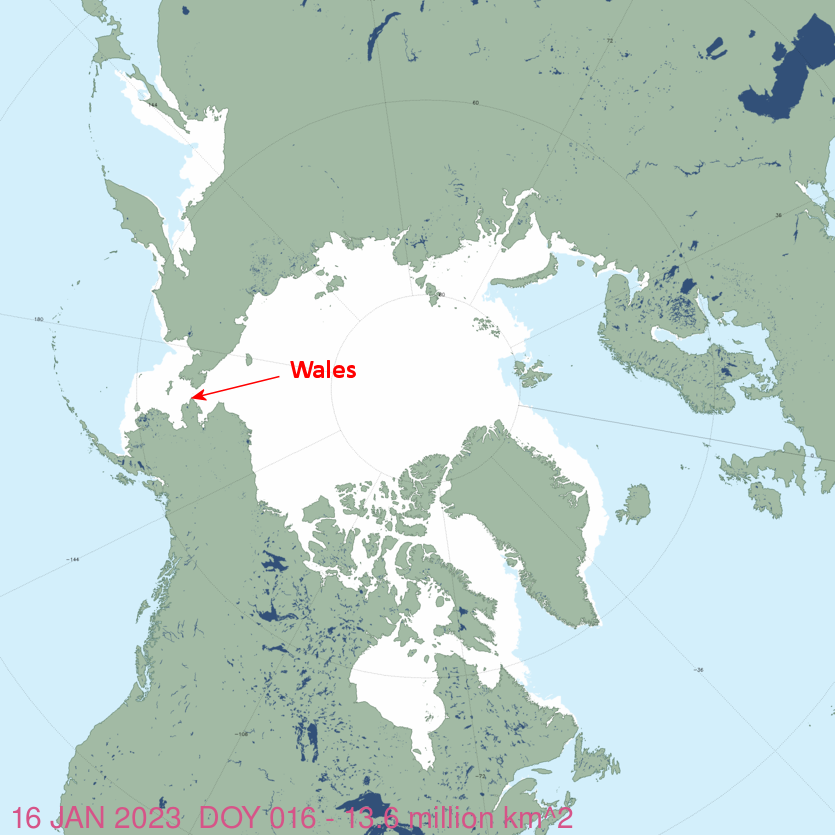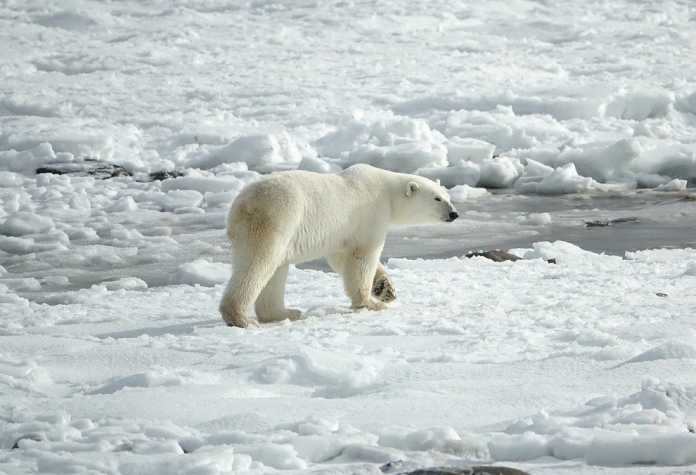The Washington Post (WaPo) ran a story on January 22, claiming global warming is making it hard for polar bears to find food leading to an increase in attacks on humans. This is false. Polar bear numbers have increased significantly during the period of recent modest warming. Greater polar bear numbers are resulting in polar bears expanding their ranges resulting in more contact and conflict with humans. Higher bear numbers are the cause of the reported increased in bear predation.
In the WaPo story, titled Polar bears could have more dangerous run-ins with people as ice melts, writers Ellen Francis and Dino Grandoni, claim a recent polar bear attack in a “small Alaska village” was driven by climate change, and melting sea ice:
Polar bear attacks are exceedingly rare. Between 1870 and 2014, there were only 73 documented attacks by wild polar bears across Canada, Greenland, Norway, Russia, and the United States, resulting in 20 human deaths, according to a 2017 study. Still, the recent mauling has raised questions about whether the impact of global warming heightens the risk of attacks by polar bears, which are powerful predators.
…
But rising temperatures are melting the sea ice that polar bears navigate to find mates, raise cubs and hunt seals to sustain their high-fat diet. The shrinking ice has put the population of polar bears at risk of decline.
This is false. Had WaPo’s writers bothered to check the location of the village against readily available sea ice conditions, they would have found that sea ice was not lacking near the location of the attack. Looking at the Arctic sea ice extent from the National Snow and Ice Data Center shows clearly that the village of Wales is surrounded by sea ice.

But, WaPo failed to mention the location of the “small Alaska village” where attack occurred was, preventing average people from assessing the sea ice conditions for themselves. The Associated Press had the village information in their story:
The fatal mauling, the first in more than 30 years in Alaska, happened Tuesday next to the front entrance of the school in Wales, an isolated Bering Strait coastal community located on the westernmost tip of the North American mainland — about 50 miles (80 kilometers) from Russia — that is no stranger to coexisting with polar bears.
It is tragic that this happened. The staff of Climate Realism extends its heartfelt condolences to the family and the community.
Before there was even an autopsy done on the bear to determine if any disease or other factors might be in play, much of the mainstream media followed the lead of WaPo in immediately blaming the attack on “lack of sea ice” due to climate change. One attack in 30 years is a single data point, and not indicative of any trend related to climate change.
A more likely explanation is that because polar bears are no longer hunted since becoming a protected species, their numbers have exploded at the same time as their fear of humans has declined. As outlined in Climate at a Glance: Polar Bears, the estimated polar bear population has quadrupled since 1950, rising from 10,000 bears in 1950 to 39,000 bears today. Meanwhile, the population of Alaska has gone from 128,643 in 1950, to 733,391 in 2020, an almost six-fold increase. According to U.S. Census Bureau data, the population of Wales, Alaska, where the attack occurred, grew more than 53 percent between 2010 and 2020.
With more, and less wary, polar bears and expanding human populations inhabiting the same areas, unfortunate episodes like this become almost inevitable. WaPo and other outlets ignored this simple fact.
It is difficult to tell if WaPo and other news outlets were simply incompetent—unable themselves to examine sea ice data and trends for the location of the attack—or if they wrote with the specific purpose of supporting the false climate narrative about sea ice and polar bears. Either way, it is a shoddy example of journalism.



















This article is on my list of the best climate science and energy articles I read today
https://honestclimatescience.blogspot.com/